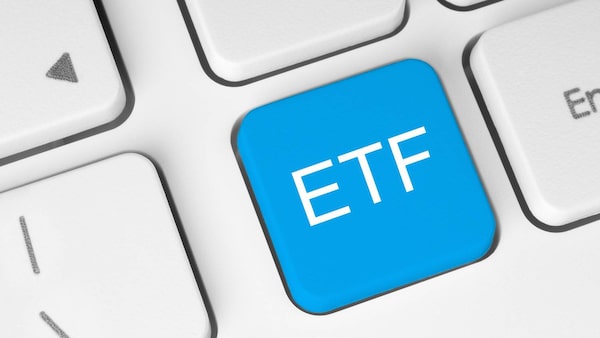
Getty Images/iStockphoto
This is a milestone year for exchange-traded funds in Canada. The amount of money invested in the 500 or so ETFs listed on the Toronto Stock Exchange hit $130-billion recently. The figure has more than doubled in the past five years.
These low-cost, passive funds that track just about any index have grown in popularity with do-it-yourself investors, but they still pale in comparison to the $1.4-trillion invested in actively managed Canadian mutual funds.
Yet, after decades of battling for market share with mutual funds, passive ETFs have wound their way into many active investment strategies.
Anthony Boright, president of InvestorCOM Inc., which provides technology to both the ETF and mutual fund industries, says he expects much of the future growth in ETFs to come from active managers using them strategically in their portfolios.
Mr. Boright considers passive funds with active methodologies – also known as smart-beta ETFs – an example of how the lines between passive and active have become blurred to accommodate the needs of active managers.
"ETF providers are all looking for more features to appeal to a consumer base. That's when you start borrowing features from another sector," he says.
For many active investment managers, ETFs are a perfect fit, says Darren Sissons, vice-
president and partner at Campbell, Lee & Ross Investment
Management.
"If you don't have access to a market or you don't have in-house expertise, you can buy an ETF relatively cheaply and give your clients exposure to that," Mr. Sissons says.
ETFs can often provide more diversified exposure to sectors or geographic regions than individual stocks can, he says. If he still wants concentrated exposure in certain stocks in the ETF, he can buy more directly.
One example in his portfolio is the Technology Select Sector SPDR Fund, which tracks more than 70 of the biggest stocks in the tech sector of the S&P 500 Index.
While the ETF is diversified in the number of companies it offers, Mr. Sissons says the weightings make it less than ideal to him. More than one-quarter of the fund consists of the tech giants Apple Inc. and Microsoft Corp. So he becomes active, buying more of the underweight stocks he likes such as Visa Inc., which has only a 3.6 per cent weighting in the ETF.
Mr. Sissons also dips into the passive pool for money market ETFs that can grow cash while waiting to be deployed.
For longer-term investments he generates income through the iShares U.S. Preferred Stock ETF. The fund holds preferred shares in big global banks including Wells Fargo & Co., HSBC Holdings PLC, Barclays Bank PLC and Citigroup Inc., and it generates dividends for unit holders.
"It gives you a preferred share and it pays a very attractive dividend," he says.
Active managers who use ETFs often come under fire for buying prepackaged portfolios instead of building their own. Mr. Sissons says ETFs in his portfolio are considered a single holding like any other stock – normally capped at 2.5 per cent to 5 per cent of the total portfolio. He also says a large part of active management is knowing when to buy and sell ETFs, and maximizing tax efficiency.
"Active management gives you the ability to move ETFs around," he says.
David Burrows, president and chief investment strategist at Barometer Capital Management Inc., says ETFs are an integral part of his firm's top-down, global-macro investment style.
"We use ETFs to get specific exposure to very focused themes," he says. "The wonderful thing about ETFs is that you can use them to target specific 'neighbourhoods.' Eighty per cent of return is getting to the right neighbourhood."
One neighbourhood where Mr. Burrows is finding value is the industrial subsector of global robotics and automation.
"The industrial sector remains the most under-owned sector in the U.S. market. The reason is that people haven't been investing in the capital stock of the United States. Last year capital investment in equipment was the lowest in 85 years," he says.
His go-to ETF to fill that void is the ROBO Global Robotics and Automation Index ETF.
Another sector in the industrial neighbourhood being targeted by Barometer is defence, through the iShares U.S. Aerospace & Defense ETF. The fund holds big-name companies including Boeing Co., United Technologies Corp. and Lockheed Martin Corp.
Mr. Burrows says ETFs are more important for active managers in the current market climate because markets are not moving as much in tandem as they usually do. "We're living in a world of very low correlations. An active manager who understands the core structural themes in the market can get very targeted exposure," he says.
One prime example of how passive ETFs can become active in the hands of an active manager is Barometer's love-hate relationship with the retail sector.
Mr. Burrows buys exposure to the upside of Internet retail by taking a long position in stocks through the First Trust Dow Jones Internet Index Fund. It tracks the Dow Jones Internet Composite Index, which represents companies that generate the majority of their revenue via the Web.
At the same time, Barometer takes a short position in the SPDR S&P Retail ETF. It tracks the S&P Retail Select Industry Index, which skews more toward bricks-and-mortar retail businesses such as apparel, automotive, food and department stores.
"You can buy any ETF that focuses in those very specific themes," he says, but the trick is being able to identify them.